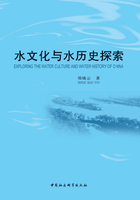
Irrigation management
After the dam and integrative projects were finished, how to manage the irrigation and facilities become an important work. Therefore, rules of water management were made by the governor for managing irrigation. It was successful in that time and continued into the subsequent hundreds of years.
According to the rules, how to share water for irrigation was to follow the model of shifting drainage. The government department set up some stages of drainage that depended on the floodgates in different part of the river, draining stage by stage. For example, in Pan Long Jiang river, there were five stages(depending on five floodgates)for drainage, the first stage in the Da Zha floodgate opens the gate to draining for 1 day, the second stage in Bo Lo village gate opens the gate for 2 days, the third stage in Xiao Ba opens the gate for 3 days,the fourth stage in Di Zang Si opens the gate for 4 days and the fifth stage in Yan Wei Zha opens the gate for 5 days, so that a draining round for 15 days then water was distributed for irrigation along river in an equal amount. Local government also made rules to maintaining the model working in good situation and punish what was against the rules(Song Hua Ba Dam-Graphy 1996). The model of drainage in other rivers was the same(Huang 1974). Correspondingly,for water security, 360 sentries with 360 water keepers and horses were set up by the government to inspect the rivers, especially for floods. If there is any accident in the rivers, for example, flooding, debacle of the riverbank, acting against the water rules, they could report to the governmental office immediately, the villagers and soldiers could be gathered in good time to resolve the problem.